
Here’s your fun fact of the day. Once upon a time in America, you could buy a new Opel. And no, not the rebadged Saturn versions from the late days of the “different kind of car company.” Actual Opels, with Opel badges and everything. But if you’re a little more “yootful” than your author, what really might surprise you is that they were sold through–envelope, please–Buick dealerships. Yes, really.

Vauxhall (UK) and Opel (Germany) were GM’s bread-and-butter European divisions back in the day. In the late Fifties, there was a surge of interest in imported cars in the United States. Maybe it was because domestic iron was getting just too big and gaudy, or maybe it had something to do with the 1958 recession and cutting household costs (my personal guess is VW, VW and VW), but at any rate many folks were suddenly buying foreign cars. Even obscure brands, such as Citroen, Hillman and Skoda, saw sales increase. Even Renault, for Pete’s sake. Of course, VW sales went even further through the roof. GM, then the Land Yacht Corporation, decided it wouldn’t be a bad idea to start selling some of their European makes in the States. For whatever reason, Pontiac dealers got the Vauxhall brand and Buick dealers got Opel.
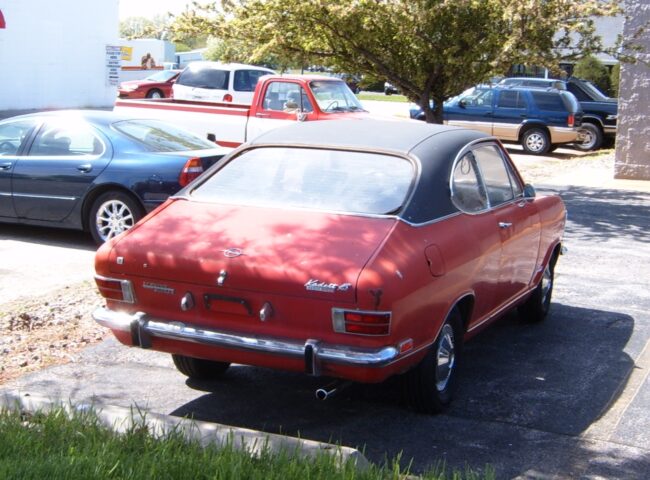
The $64,000 question is why they did it that way. GM had so much cash at the time, why didn’t they invest in free-standing dealerships? How many Bonneville buyers were going to cross-shop a Victor? How many people looking at Electra convertibles were going to decide to buy a Kadett?
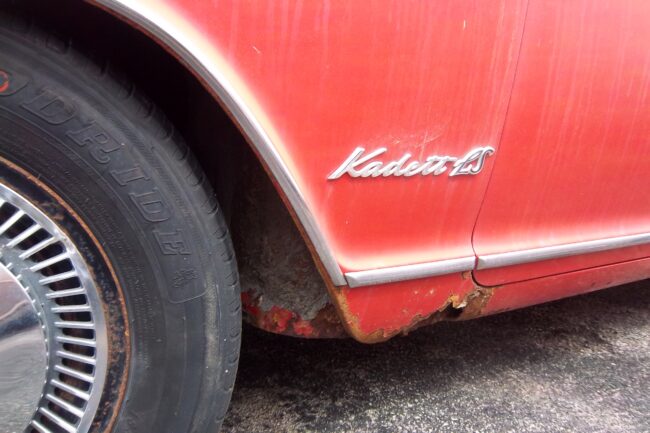
But I am guessing it was in case they tanked sales-wise, there wouldn’t be a bunch of moribund dealerships sitting empty–and dealer franchises to buy out. Vauxhall was the first casualty, disappearing from American shores in about 1961. Opel hung on, and with the introduction of the Kadett B saw a brief renaissance in the US import market. In 1968, a fastback was added, looking an awful lot like a 3/4 scale Nova.

I spotted our featured example way, way, wayyyy back in April 2012, sitting in front of a repair shop. Other than a lime green Manta circa 2008, a total parts-car quality yellow GT about ten years ago, and burgundy 74-75 Manta Luxus (with burgundy velour!) in Nauvoo, IL a few years back, I have not seen any Opels around here. They were well-built in their day, but their economical nature meant that most of them were driven into the ground and retired decades ago. And even the hardier surviving examples would have had trouble finding parts by the late 70s and early 80s, at least in the U.S. So I was very surprised at the time, to see this Kadett.
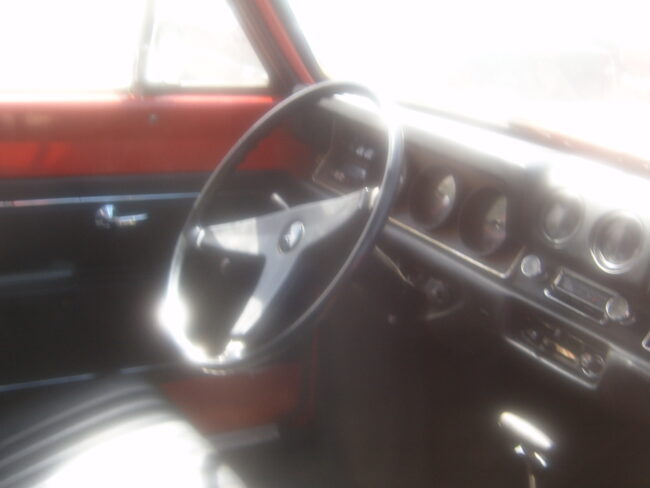
Yes, it’s blurry, I still hadn’t mastered shooting through a closed window in 2012, lol.
The nice lady behind the counter told me that it was a 1969 model, and that the owner was trying to get it functional. She said to take as many photos as I wanted. It was in remarkably original shape, right down to the wheel covers. It’s a local car too. The chrome dealer tag on the back is from Schwind-Boeker, a former Buick-Cadillac dealer in Davenport that closed in the late ’80s. Amazing that this car is still in the area after all that time.
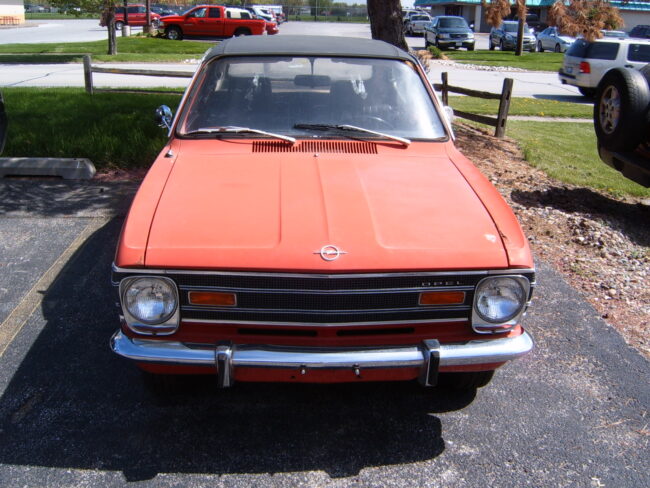
Due to rising exchange rates (and perhaps partly due to Car and Driver’s gleefully negative article on the Kadett wagon) Opel sales started to slide in the US starting in about 1970. In 1971, the new Opel Ascona was introduced (dubbed the Opel 1900 in the US) and the Kadett became just an Opel.
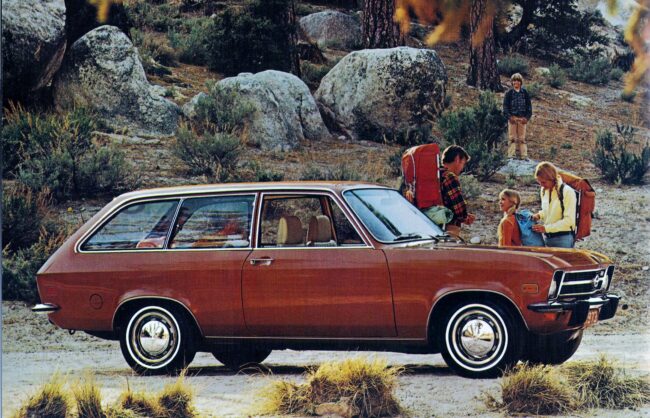
The Ascona/1900 was a bit bigger and sleeker than the ‘Opel’ and included a new four-door sedan in addition to two-door sedan and wagon models. The ex-Kadett continued as a two-door sedan and two-door wagon; both would disappear after 1972.
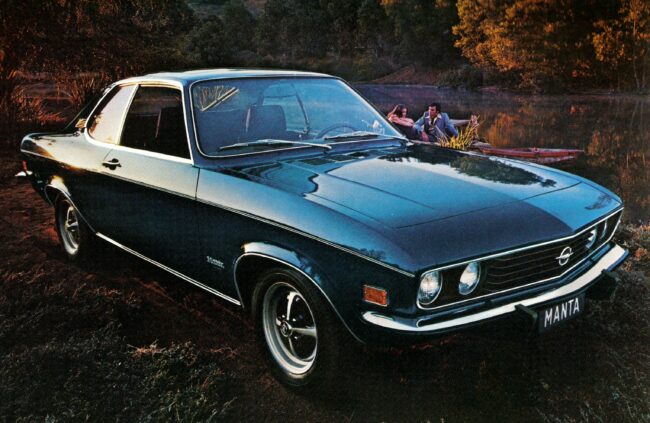
The 1900 coupe (which was renamed the Manta in ’73) was especially sharp. In addition to the top-trim Luxus shown above, there was a basic coupe and a Rallye version with blacked-out hood, stripes and fog lamps.

For 1973, the Kadetts were gone, with only the 1900 nee Ascona available to US customers. This was the last year for a full lineup, as inflation and the rise of the German mark were making Opels a much harder sell.
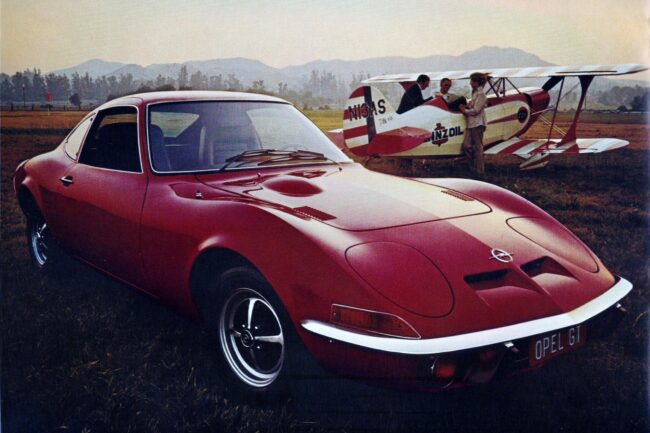
The two-seat Opel GT was also in its last year, a victim of declining sales and stricter bumper regulations. There would be no mini-Corvette for 1974.

Oh, and speaking of, just two days ago my Uncle Dave spotted this one in his neighborhood. Guess Maxwell Smart was in town.
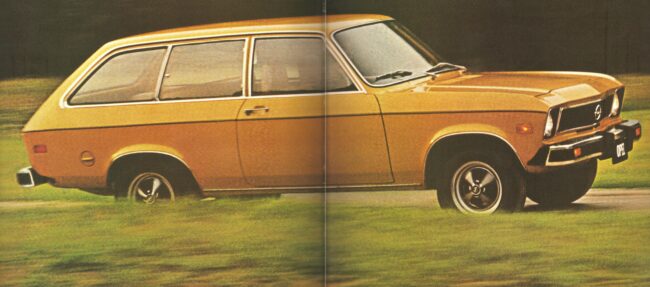
1974 Sport Wagon
Some Opels returned for 1974, but the lineup was severely pruned. In addition to the aforementioned GT, all 1900 models were gone, save the 1900 wagon, which was renamed the Manta Sport Wagon. The only other models in the lineup were the Manta coupes, still available in Luxus, Rallye and standard versions.

1975 was the end of the line for German Opels in America. The Manta returned in a single version, as did the Sport Wagon. In an unusual move, the 1900 two-door sedan returned.
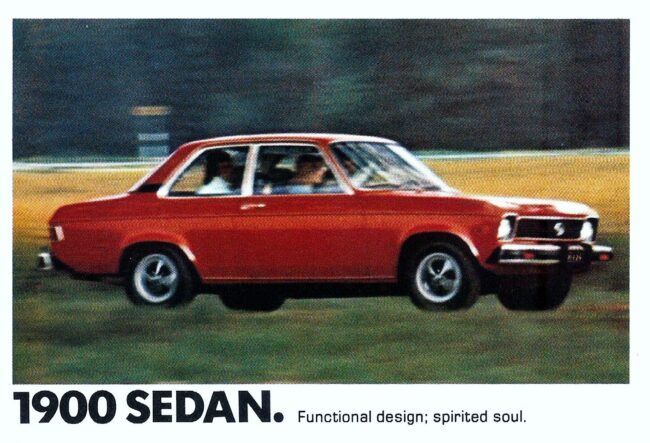
All Opels now featured Bosch electronic fuel injection. The 1.9L inline four now produced 81 hp and 96 lb ft of torque. For 1976, the Kadett C would replace the Manta/1900 in the US, but they would be built under license by Isuzu and renamed Opel Isuzu, then Buick Opel for 1977-79.

1978 Sport Coupe
While not bad cars, they still had to deal with Buick salesmen trying to sell them to their LeSabre and Regal clients, and Opels in any form disappeared from American roads for good after 1979. Ironically, after GM gave up, Isuzu started selling the very same car under their own name as the I Mark, and did much better than the Buick salesmen. How much better would Opel have done in the States if they had dedicated Opel-only dealers, mechanics and salespeople? Could Opel have lasted longer and sold more cars under those circumstances?
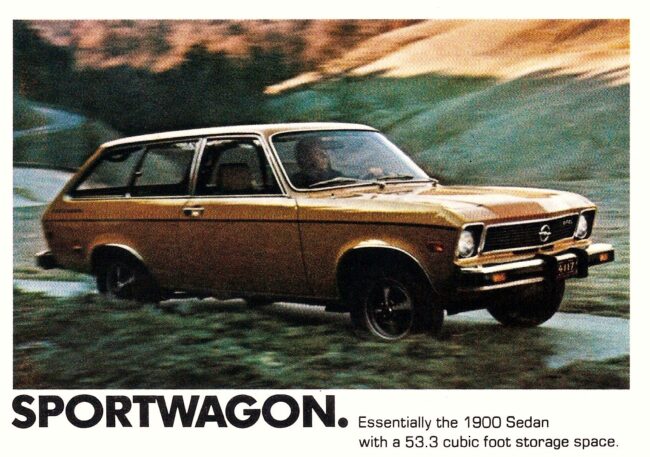







8 Comments
I certainly like the looks of the first one ! .
I had a wonderful ride through the Ojai area of California in a heavily modified Opel GT with a gray market 2 liter engine . fast and comfortable .
-Nate
The German Mark’s ascent versus the British Pound’s decline probably explains why Opels were deposited further up Sloan’s ladder with Buick. Given how more utilitarian the style of the Kadett A was, and how much the American Opel style crew of the time respected Euro style over American, the level of mini Nova style is surprising in this generation. Still needed the approval of grownups in Detroit?
It is great to see you still posting Tom, I had about given this site up for dead.
I had a friend who drove a Manta in the early 80’s. We called it “the DeLorean” due to it’s utter lack of mystique. Wasn’t a bad car and as I recall was very reliable. It’s Teutonic interior reminded me of a different friend’s imported Capri of about the same vintage.
These are nice tidy little cars, but one expects nothing less from Deutschland. Compared to the Skyhawks they shared showrooms with, these were jewels.
I’d love a Manta wagon and coupe to play with, along with an Isuzu I-Mark sedan (which was the only notchback T-car sold in the US, IRRC).
The Bitter SC was a grand touring car based on the Opel Senator. When they were imported here in the ’80s, they were sold by selected Buick dealers.
In the early 70s, my father bought an Opel Kadett couple from a guy at work. The guy liked the car, but for some reason once it got to be a couple of years old it just wasn’t making power like it had when it was new. My dad liked to tinker with stuff so he brought it home and set about fixing it. It took him a week or two, but eventually he figured it out. Turns out there was a bolt that backed out of the backside of the gas pedal and stopped it from going down very far.
We had it for several years and eventually both my brothers ended up driving it to high school. The story is that my brother Tracy put it into a ditch and rolled it onto its top. He and some friends rolled it back onto its wheels and they popped the top back out. They even thought to put oil back in the engine but forgot to put it back into the transmission and ended up burning it out. From there it went into our garage where I used to play in it. I thought it would eventually be mine but it sat in the garage for a year or so and eventually ended up being sold.
About the same time my dad got ours, our neighbors brought home a Kadett wagon, and a lady who lived up the road from us had a little yellow GT. Just a bunch of happy, zippy little Opels running around back then. I’d be thrilled to own one but like most everything else from the good old days, they’re pretty much gone now.
That “Car and Driver” article was nonsense. I drove many Opel Kadetts and 1900 coupes and found them an interesting alternative to their natural competitors from Fiat, VW, et al. Easy to work on too, because Opel parts were easy to find in that era, and their design was so simple. One thing I found curious was that a lot of the early GTs were imported with the 1100 cc engine. One evening (about November 1969) I walked into my local Buick dealer, Dubose Buick in Richmond, and found three GTs on the showroom floor. Only one had the 1.9 engine, the others were 1100s. The salesman said the 1900s were in short supply. Madness! An 1100 GT would have gotten stomped by a Renault Caravelle.
The whole Opel/GM USA situation is just indicative of how GM USA has treated small cars – well, basically, since forever. Do things on the cheap, half-ass everything, then when it fails blame it on the supposed fact that you can’t sell small cars in the US, and people like VW, Honda, Toyota, Mazda, Datsun/Nissan, Subaru, Hyundai, etc. are somehow “cheating”.
Corvair
Vega
X car
Cavalier
Chevette
Opel
Saturn
Geo
Fiero
All started out with good ideas, exotic ideas not realizable in reality (Corvair, Vega), flawed execution caused by corporate politics (Vega, Corvair), poor-boying it (Corvair, Fiero, Cavalier, Chevette, X Car), lack of clarity on target market (Corvair, Fiero), then failure to support the thing (Saturn, Opel), or finally getting the design right just in time to cancel the product line (Corvair, Fiero)… Well, it just goes on and on.